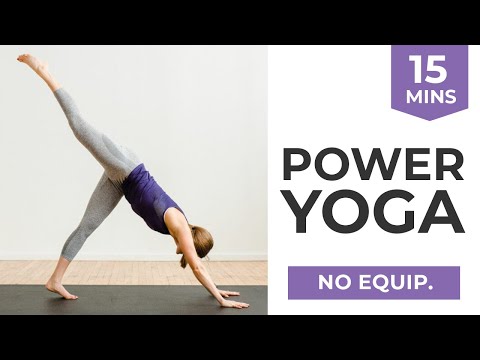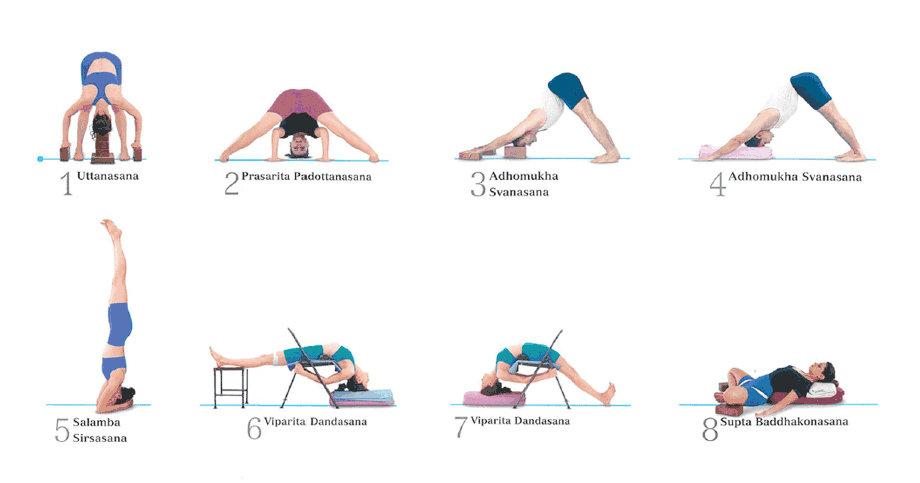
Vinyasa Yoga, a popular form exercise, is also well-known because of its profound effects on the brain. The poses require intense focus and fine attention to detail. To achieve flow, which is a complete awareness of the moment, the focus must be on the breath and body. The goal is for you to be able to achieve this state of mindfulness as soon as possible. This type is ideal for busy people.
You will need to deepen your breathing as the poses can be quite challenging. This type of breathing is essential for dealing with stress, and pushing through physical obstacles. The brain is notified by long inhale and exhale through the nose when yoga classes are over. This also sends a message to the brain to focus on the heart center, which is an important part of the practice. It also prevents injuries.
Vinyasa-yoga classes generally last for around an hour, but there is no set time. You can find classes that last much longer. Some take only 30 seconds. The studio should be able call you in advance to confirm the class duration. As the title suggests, the sequence will contain a variety of poses. You can choose the vinyasa class that suits your level of fitness, depending on how intense it is.

Vinyasa Yoga can seem intimidating to someone who is new to the practice. All classes are different. Classes usually begin with breathing exercises. Then, they end with a restorative position called Savasana. This is meant to help you stay present in the moment and connect you with your breath. Many classes start with some warm-up poses such as the Cat-Cow or Downward Fass dog. Make sure to have an experience with all instructors before you commit to one studio.
Vinyasa yoga requires you to move between poses continuously if you are new to it. While it's a fast-paced style of yoga, it is still a meditative practice. This type of yoga is notable for its constant movement between poses. It helps to strengthen the mind-body connection. You can focus your attention on the poses using the breath, but you don't have to hold your breath or breath rapidly.
Vinyasayoga can improve your flexibility and posture, but it can also be a great way for you to strengthen your core and build muscle. It is the most popular form of exercise for beginners and helps improve balance, core strength, and range of motion. It is best for those who don't know how to stretch and might need some help. However, it is important to begin with something you are comfortable doing every day.
Your level of flexibility, strength and ability are important factors when choosing a vinyasa course. A beginner's class is easier than an advanced. A beginner's class will give you the same benefits. Vinyasa improves flexibility and strength. It also helps with mental and physical health. Throughout the entire class, you will be able refocus on your breathing.

Vinyasa Yoga is a form that emphasizes meditative movement. This will teach you to be more present and aware of your body. It's important that you pay attention to your breathing throughout the practice. Vinyasa will help you develop mental agility and physical stamina as you practice it. As you continue to practice it, your practice will improve.
Vinyasayoga has many meditative advantages. It can help you improve your mental and physical health. It helps you manage stress and improves your mood. Vinyasa teachers may mix the postures with longer-held and more yin positions during classes. If done correctly, it can be like a moving meditation. You will feel more energetic, vibrant, relaxed, and alive.
FAQ
What is the best way to train?
It all depends on your goals. If you want to build muscle mass, then do heavy weights first. Next, move on to cardio. For those who want to lose weight or exercise, you can switch from cardio to strength-training.
If you just want to burn fat, start by doing cardio. Add strength training to your workouts.
Do cardio first if you are looking to increase muscle mass. It stimulates growth hormones that help build muscle mass.
You should also eat before your workout. You will be able to give your muscles more fuel so they can work harder. This will make you feel better while working out.
What's a good routine for a daily workout?
Regular exercise is essential to staying fit. It doesn't matter which type of fitness you choose, as long as it is done regularly. Consistency is the key. It is important to stay consistent in order to get results.
Begin with a small amount of daily exercise (like walking). You can gradually increase the amount of exercise you do until you have 30 minutes each day. This could be running, biking, swimming or weight training.
It is important to exercise every day of the week. Don't skip any sessions unless you have a valid reason for not attending.
Make sure to wear appropriate clothing and footwear for outdoor exercise. It is important to take into account the weather conditions, and how they may affect your ability to exercise safely.
Make sure that you drink plenty of water while you're exercising. Avoid drinking alcohol during this time because it can cause dehydration. Avoid caffeinated drinks, such as coffee, tea and cola. These drinks may give you energy but also dehydrate your body.
It's common to feel tired after your first workout. If you stick with your training program, you'll feel more awake and alert.
How Metabolic Health is Key to Aging Well
People live longer lives than ever before. But as they do, they're also getting sicker. Even though we have made significant advances in medical science it is becoming clearer that our current approach doesn't work.
We must change the way that we look at health and aging. Healthy aging is possible only if we look at our metabolic health, not just weight loss, but also overall well-being.
You must ensure your metabolism is strong and healthy throughout your life if you want to lead a long, active life.
There are many options to improve your metabolic health. These 7 foods can be incorporated into your diet.
-
Resveratrol has been proven to increase cellular longevity. They also contain vitamins C & E, as well as antioxidants.
-
Lentils and pinto beans, which are legumes, provide great fiber and plant-based sources of protein. These nutrients help to keep blood sugar levels constant so they don't spike and crash.
-
Broccoli's sulforaphane has been shown to protect DNA from damage in research. It may even slow down cancer growth.
-
Chia Seeds have high levels of omega-3 fatty oils and fiber. They're also loaded with antioxidants and protein. All these nutrients support heart health, brain function and gut health.
-
Green Tea has polyphenols called catechins. Green tea catechins have been shown to reduce bone fractures, heart disease, cognitive decline, diabetes risk, and other health issues.
-
Salmonis one of the best sources of lean protein, low in saturated fat, and packed with vitamin D.
-
Walnuts are rich in omega-3s as well as antioxidants such alpha lipoic acids (ALA). ALA aids in energy production and protection against inflammation.
Statistics
- An estimated calorie range for moderately active adult males falls between 2,200 to 2,800 calories per day, depending on age. (eatright.org)
- 10 pounds in a month is likely during a lean bulking phase, especially for beginners. (muscleandstrength.com)
- According to the American Heart Association, blood pressure should be checked at least once every two years, beginning at age 20. (my.clevelandclinic.org)
- Cardmembers earn 5% Back at Amazon.com with a Prime Credit Card. (amazon.com)
- Are You One of the 20% of Guys (mh.co.za)
External Links
How To
How does a man become fit in just 30 days?
Breaking down your fitness goals into manageable steps is the best way to reach your goals.
Each day you need to be working towards your goal. This could be anything from running 3km to doing 10 pushups in 5 minutes.
Consistently doing this will lead to positive results.
You must be consistent. You must persevere until your success is achieved.
What is the difference in Aerobic Fitness and Anaerobic Fitness
Anaerobic fitness describes the body's ability not to use oxygen to perform intense physical tasks. Anaerobic pathways provide sufficient energy for high-intensity exercise. Anaerobic pathways include glycolysis, creatine phosphate, the phosphagen, lactic acid, etc.
In contrast, aerobic fitness refers to sustaining continuous low-intensity exercise. When performing aerobic exercises oxygen is used to fuel the cells. The aerobic pathway is more efficient than the anaerobic.
To run a marathon you need to first increase your aerobic capacity. If you only focus on building up your anaerobic capacity, you won't be able to finish the race.
Aerobic fitness may also be known as cardiovascular fitness. The most common methods for assessing cardiovascular fitness include VO2 max testing or step tests.
VO2 Max Test
The body's maximum oxygen consumption during exercise is called the VO2 Max. This test measures the amount of O2 the body can utilize while exercising.
This test can measure your cardiovascular fitness accurately. However, it requires expensive equipment and highly trained professionals to administer the test.
Step Tests
Step tests are a simple but effective way to measure cardiovascular fitness. Based on your age and weight, they involve running or walking on a track or treadmill for a specified time.
These tests are inexpensive, easy to conduct, and can be done almost anywhere. You could, for instance, run on a treadmill for two minutes, rest for one minute, and then go back to the starting point for 20 minutes. Your heart rate should remain within a specific range throughout the whole session.
This is the "Bruce Protocol". Bruce, himself a runner, created this protocol after realizing that he would not feel his heart rate increase when running longer distances.